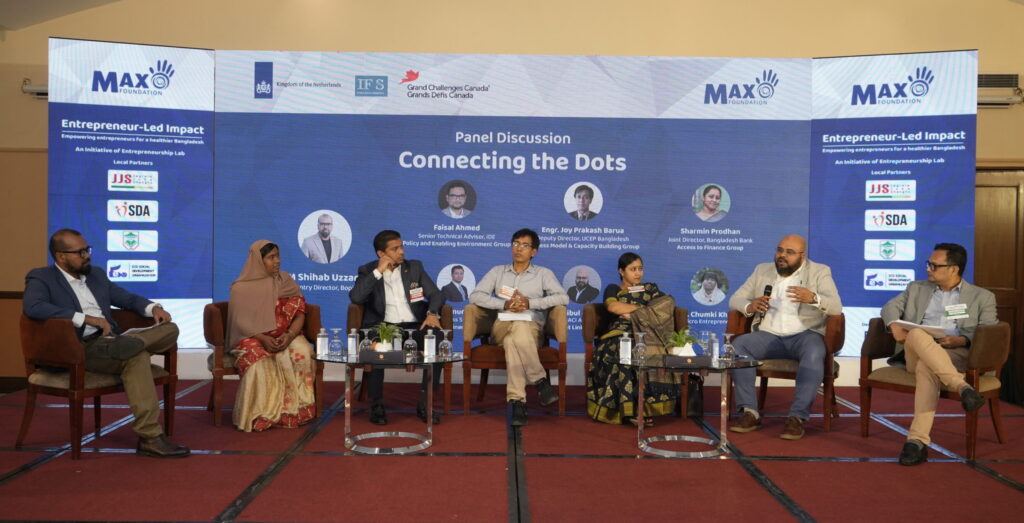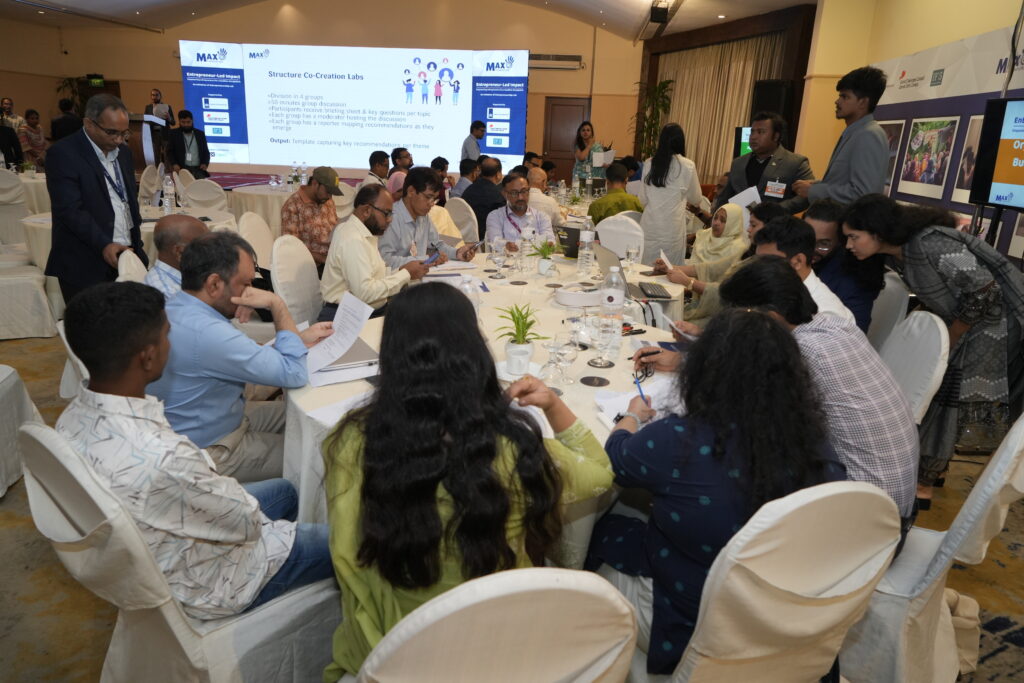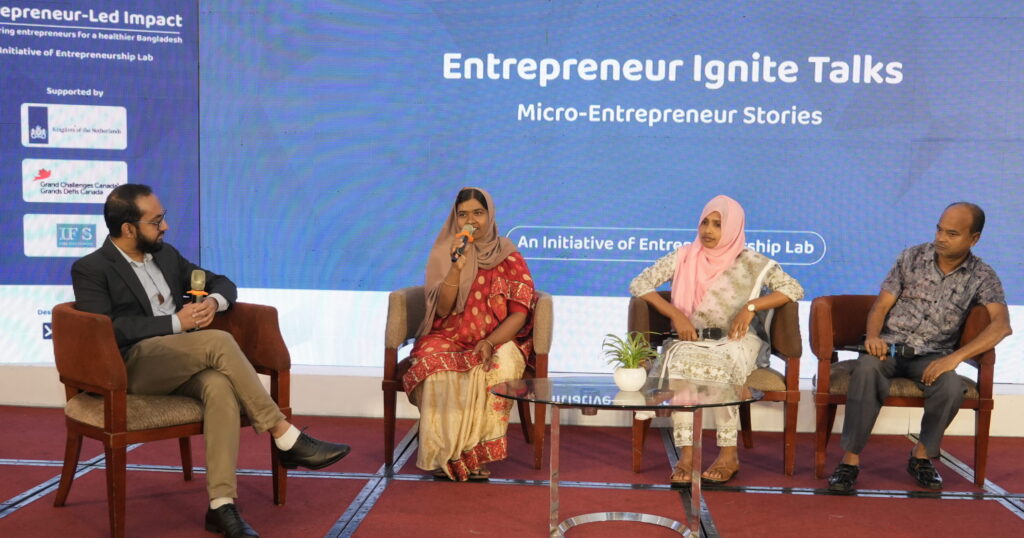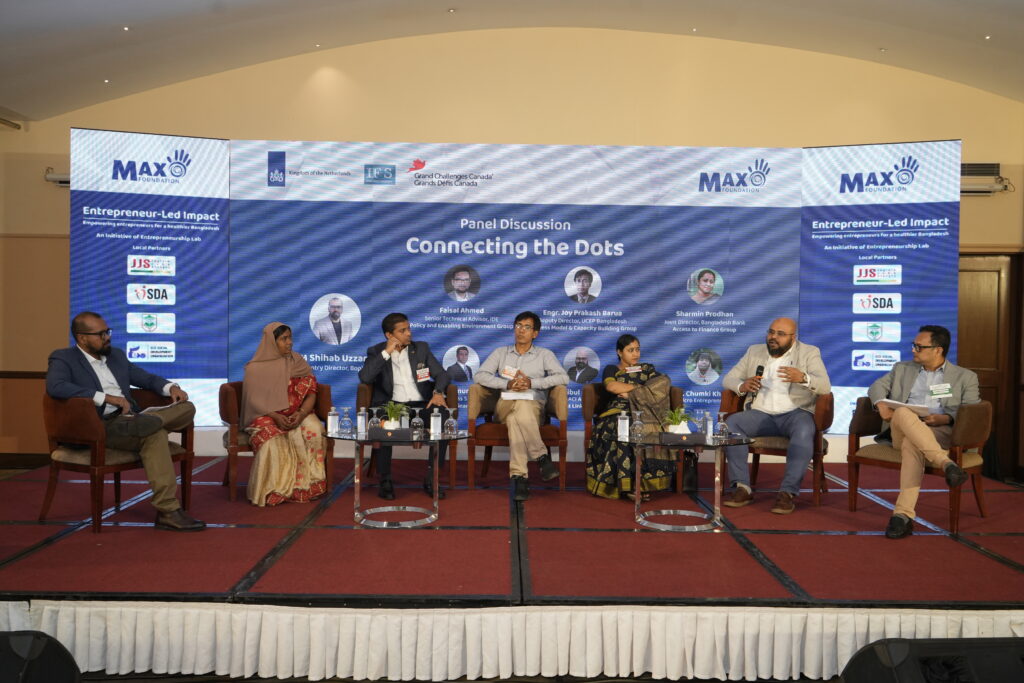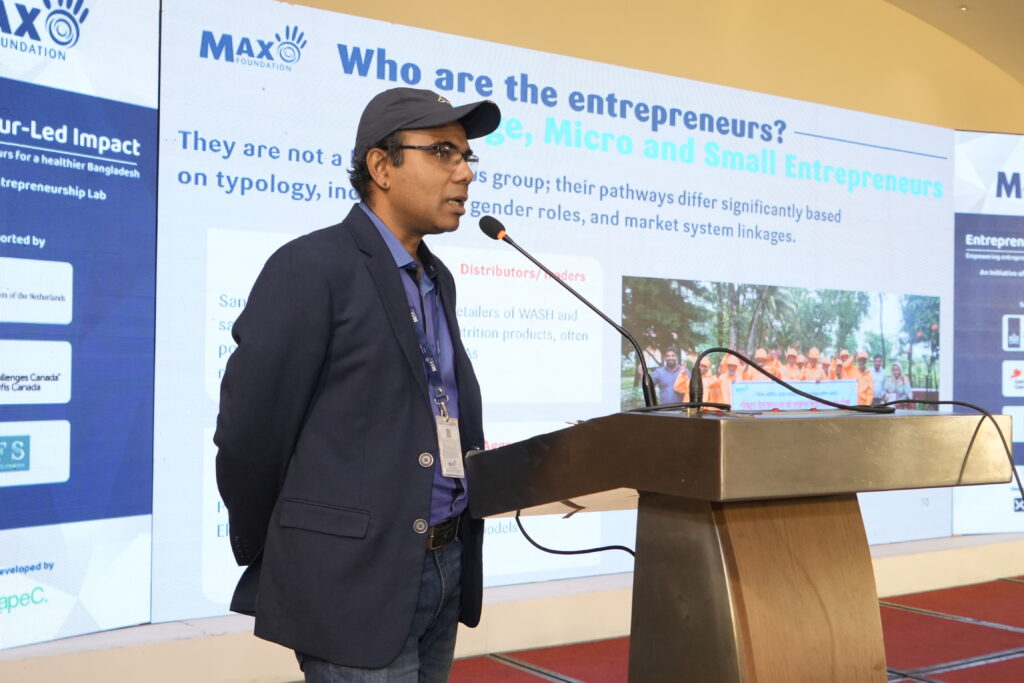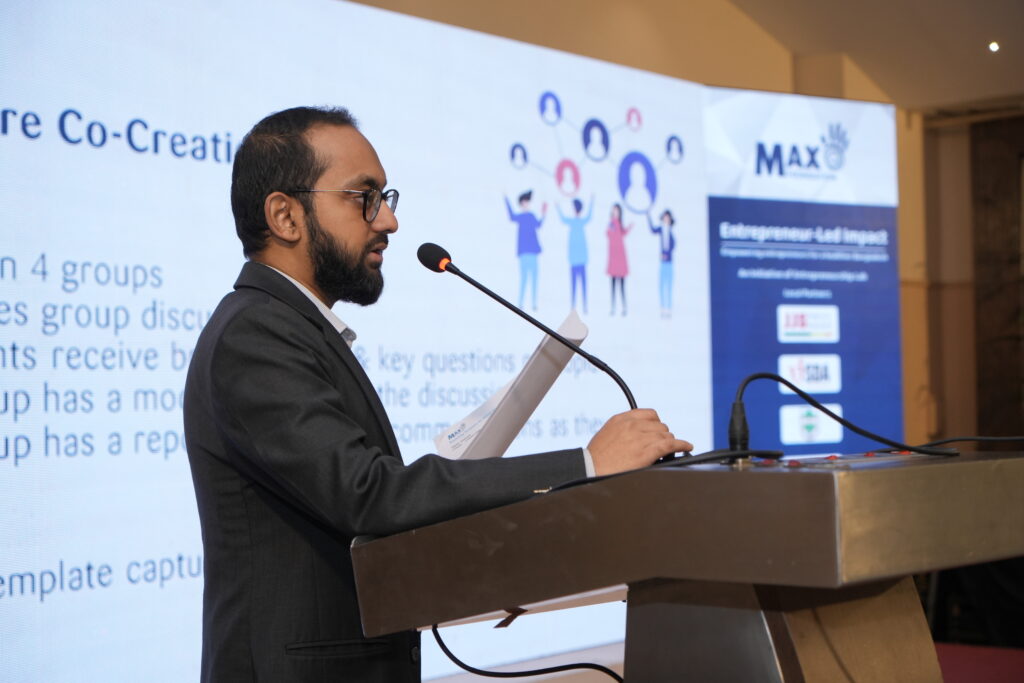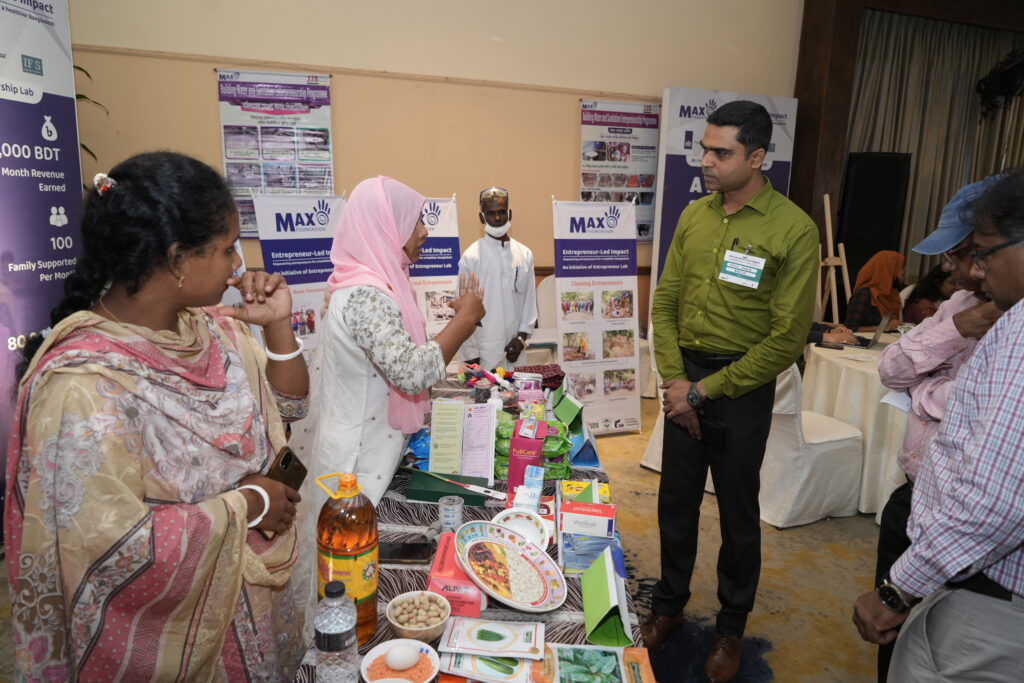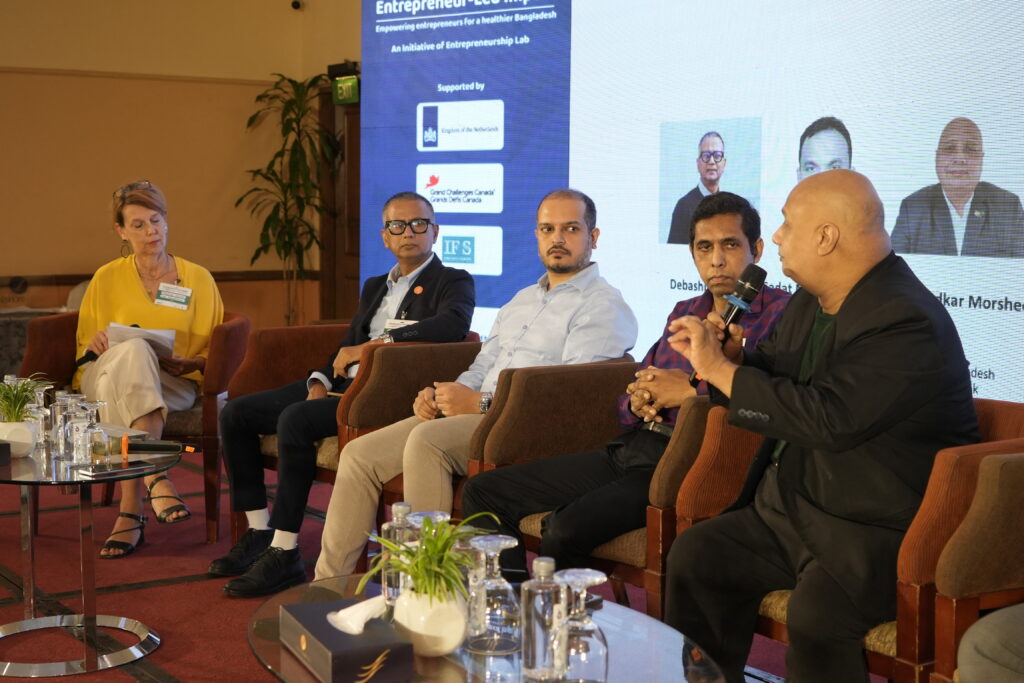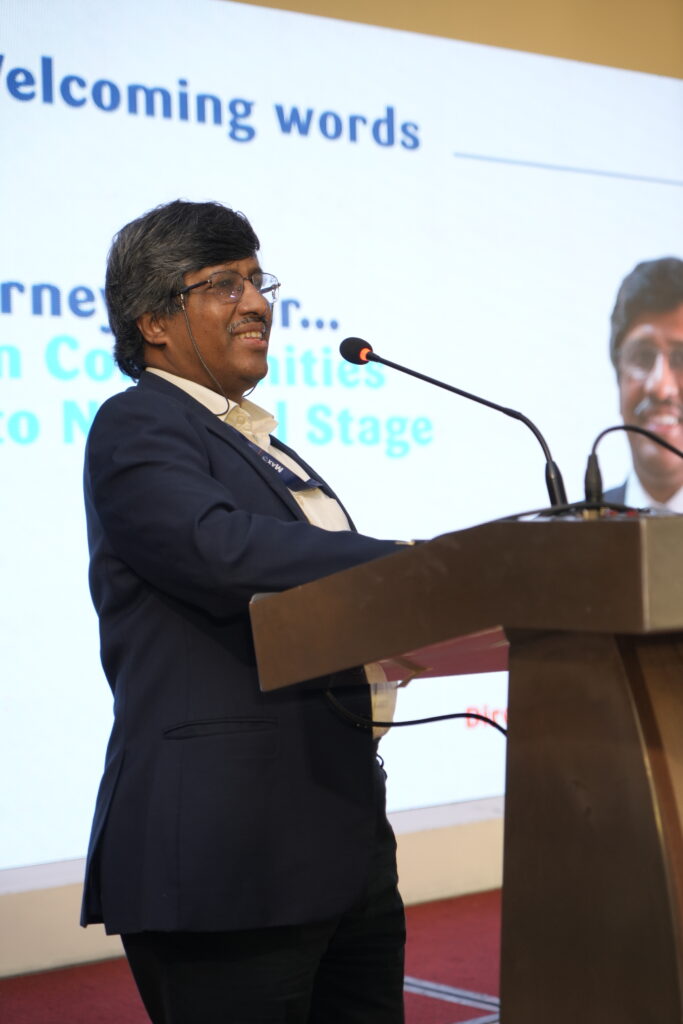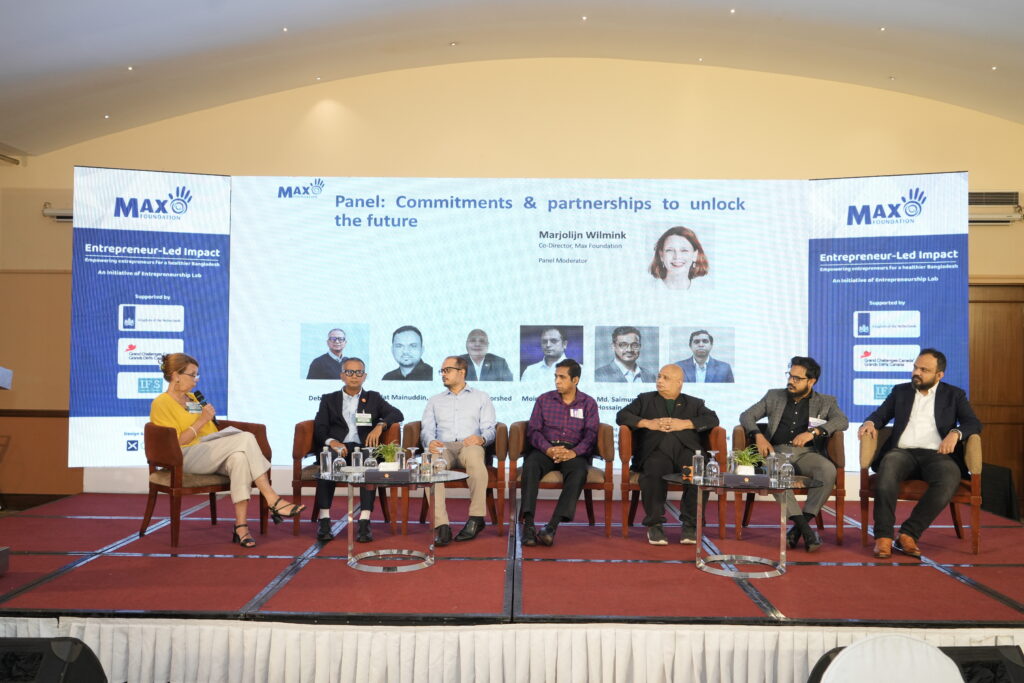Connecting Micro-Entrepreneurs for a Healthier Future
Max Foundation Bangladesh brought together over a hundred stakeholders to unlock the potential of rural entrepreneurs towards driving health solutions.

Millions of small-scale and micro entrepreneurs form the invisible backbone of Bangladesh’s economy. The registered data shows their scale, but countless more contribute to the informal economy. Without supporting the ecosystem they live in, cost of life and living becomes more expensive. That’s part of why Max Foundation Bangladesh brought together over a hundred game-changers in Dhaka this September.
When Entrepreneurs Meet Market Makers: A Powerful Dialogue
At our National Workshop on “Entrepreneur-Led Impact: Supporting entrepreneurs for a healthier Bangladesh”, micro and small entrepreneurs stood shoulder to shoulder with banks, corporates, NGOs, and policymakers. Their voices were powerful, reminding everyone that they are not ‘just entrepreneurs’, but essential solution providers delivering WASH (Water, Sanitation and Hygiene), nutrition, and health services to their communities.
Take Mostafa Kamal from Khulna: “I could make more profit selling only to those who can afford it,” he tells the room, “but I choose to serve ultra-poor customers too.” His choice to prioritise community health over maximum profit helped three entire villages achieve “Healthy Village” status. Meanwhile, Nusrat Jahan transformed from family-dependent housewife to District Association President representing 300+ entrepreneurs, declaring boldly: “I want to be CEO of a company” showing her ambition extends far beyond micro-enterprise survival. Her journey from restricted domestic life to professional leadership demonstrates the transformation possible when women entrepreneurs receive proper support.
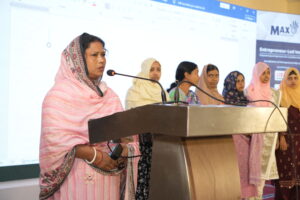
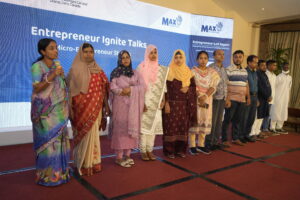
Breaking Down the Barriers: Four Critical Challenges
The workshop revealed exactly what hinders these entrepreneurs from growing; barriers that our market systems approach is designed to address:
– Finance exists, but doesn’t reach them. Only 20% of rural entrepreneurs can access formal loans, mainly due to lack of collateral. By strengthening the connections between entrepreneurs and financial institutions, we can create better access to growth capital.
– They remain invisible to the formal system. Without reliable entrepreneur databases, banks and government struggle to design services that actually work for them. Our market systems approach focuses on building these critical information networks that connect supply with demand.
– They can’t access bigger markets. Without bulk buying power or proper connections, even successful entrepreneurs stay small-scale. This is where our work on strengthening supply chains and creating entrepreneur associations becomes crucial for scaling impact.
– Support is everywhere but nowhere. Help from NGOs, government, and others remains scattered and confusing, making it hard for entrepreneurs to find what they need. Our approach brings these actors together to create a coordinated ecosystem.
Making Impact Visible: Moving Beyond Traditional Thinking
These entrepreneurs deliver preventive health, sanitation, safe water, and nutrition services that actually reduce future healthcare costs and strengthen community resilience. Traditional return on investment (ROI) metrics miss capturing the social value that these investments make. For example, typically we think of measuring as such: when you invest €1 you are able to supply water to X amount of people.
Measuring the social return of investment goes beyond that to say: when families have access to clean water through local entrepreneurs, hospital visits for waterborne diseases drop and hereby the money families need to spend on healthcare. Or, instead of simply measuring how many children receive proper nutrition products, consider the impact of a community, region or country with an increased amount of children with improved cognitive development.
This shift matters because the right question isn’t “what’s the lowest cost investment” but “what creates the most lasting value?” Sometimes a slightly more expensive solution that builds on existing systems generates far greater returns over time than a cheaper programme that collapses when funding ends.
Exploring New Solutions: The Entrepreneurship Lab
This workshop showed one thing clearly: an ‘accelerator’ is needed that connects what already exists, fills the gaps, and ensures entrepreneurs are sustainably supported to thrive.
As a first step towards addressing this challenge, Max Foundation Bangladesh introduced the concept of the Entrepreneurship Lab, a tool we’re exploring to better connect entrepreneurs with the resources, networks, and knowledge they need. This represents a concrete application of our market systems approach, designed to address the systemic barriers we identified.
The soft launch during the workshop generated considerable interest from stakeholders who recognised the potential for such a platform to bridge existing gaps in the entrepreneurship ecosystem. This kind of systems strengthening—bringing together different market actors to solve shared challenges—is central to creating lasting change.
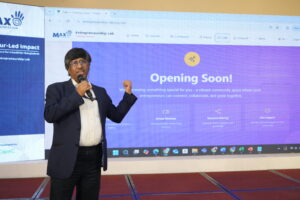
Creating Lasting Impact Through Connected Approaches
This workshop is a perfect example of how our approaches come together in practice. It shows Evidence for Scale by testing innovative solutions, gathering stakeholder feedback, and generating proof points for wider adoption. At the same time, it illustrates how Market-Based approaches can unlock impact, with the strong interest in the Entrepreneurship Lab concept showing that evidence-based innovations gain traction when they meet real market needs.
Crucially, this is also System Strengthening in action: building an enabling environment where entrepreneurs are recognised as core solution providers. By addressing market gaps and reinforcing the wider ecosystem, we’re creating the conditions for sustainable change that outlasts donor funding.
Together, these approaches become interconnected drivers of long-term impact on child health in Bangladesh.
View more pictures from the event:
